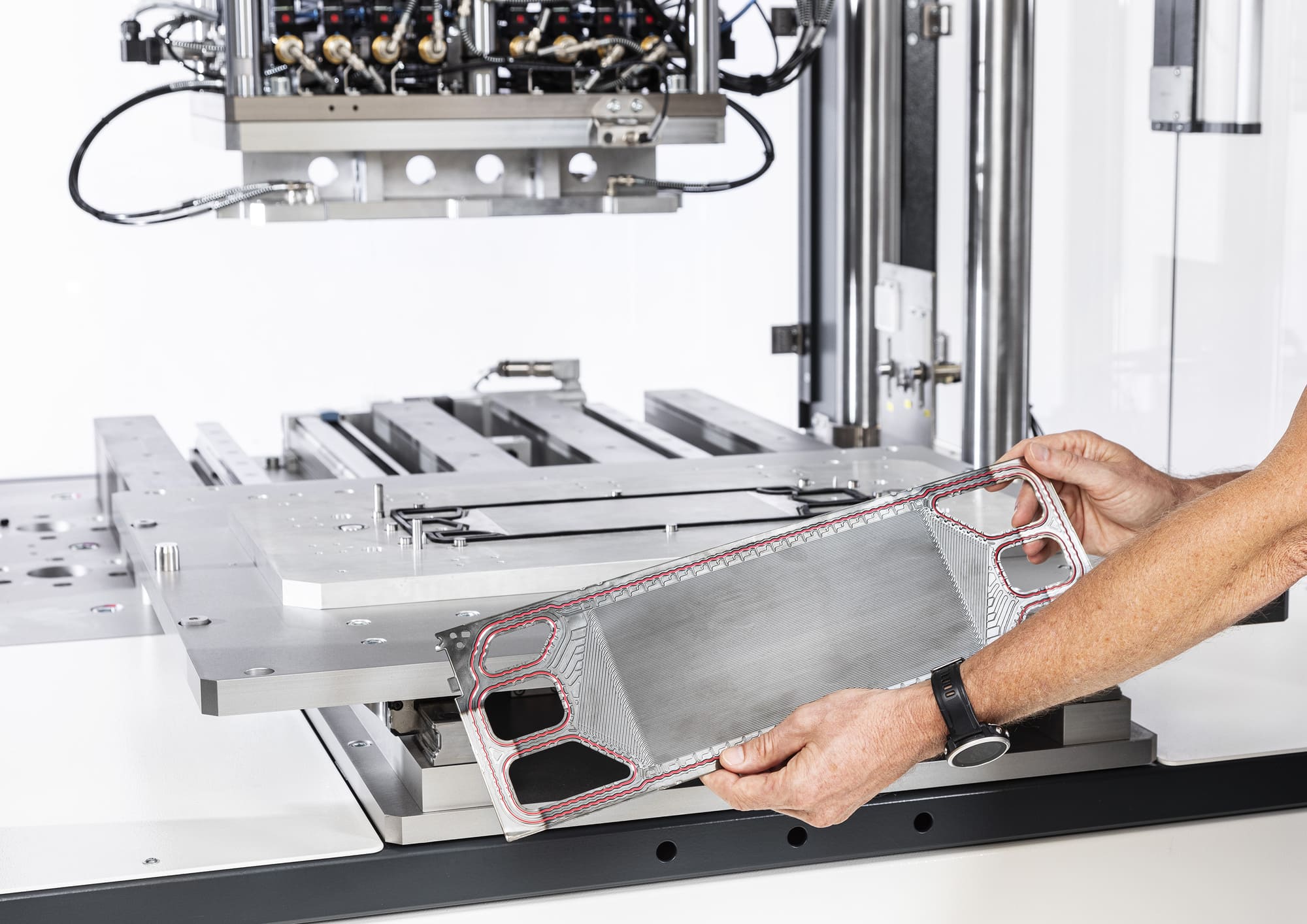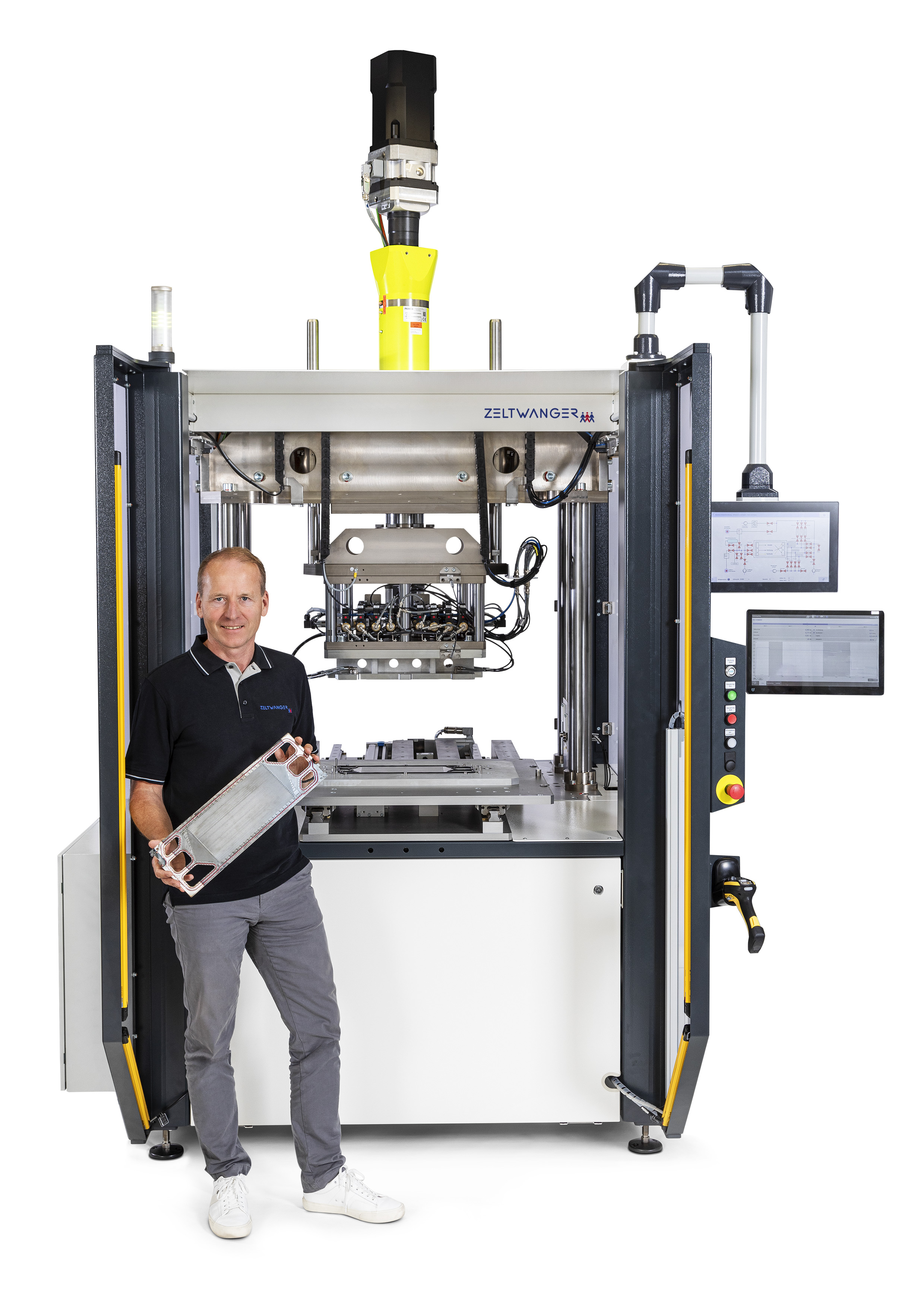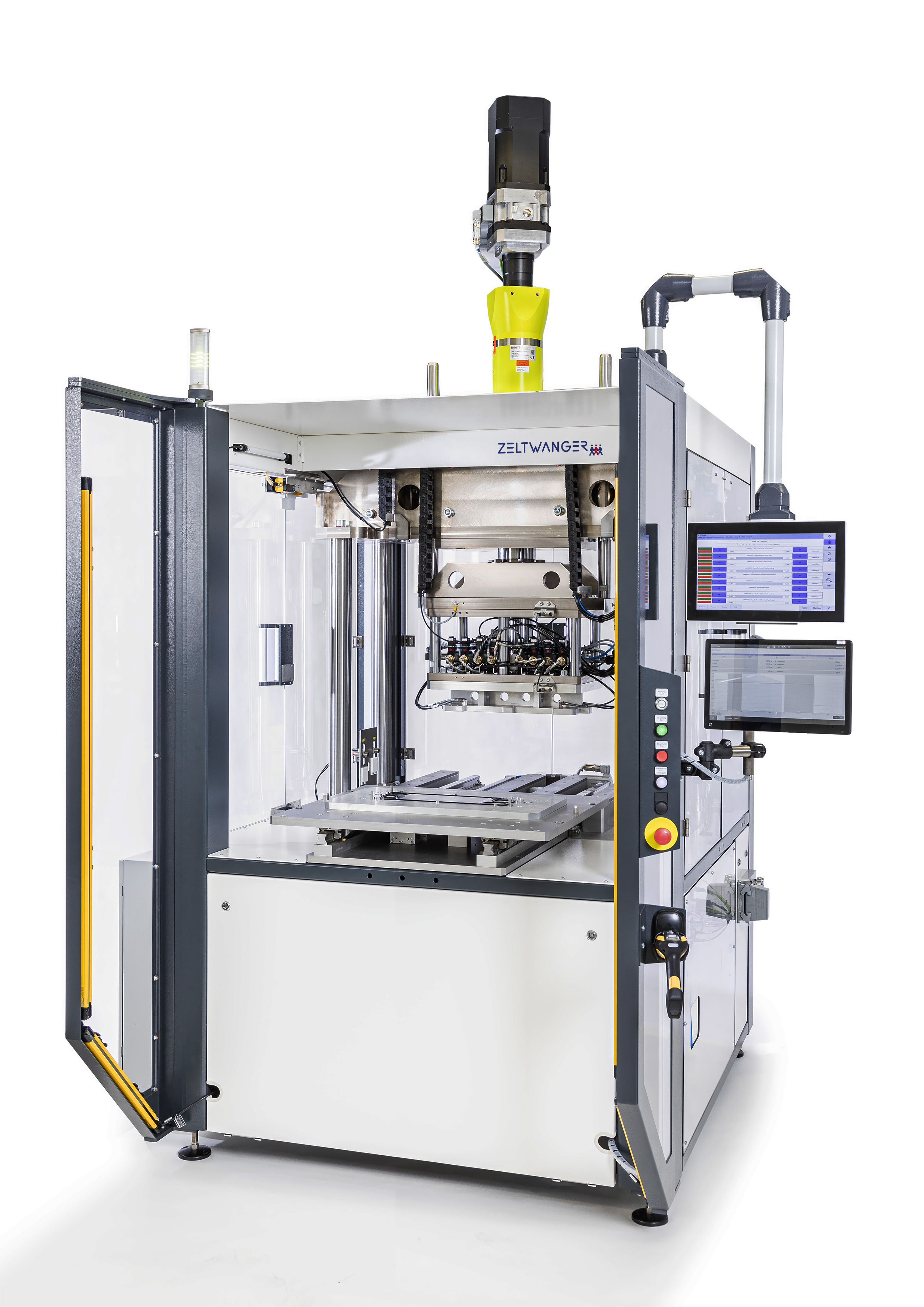
Leak testing as a service for bipolar plates
From lab to fab – ZELTWANGER offers scalable test equipment for bipolar plates, battery cells & more
ZELTWANGER Leaktesting & Automation GmbH develops and manufactures solutions for leak testing of bipolar plates, fuel cell stacks, battery cells and packs, and much more. The Tübingen-based company also offers a testing service for these types of products, which can be used as a lean entry into series production.
The increasing popularity of vehicles with fuel cell and electric drives means that solutions for leak testing are also in greater demand. Because whenever hydrogen or electrolytes are used, tightness is an indispensable quality and safety feature. Two typical components are bipolar plates and battery cells. These are assembled into fuel cell stacks or battery packs and manufactured in large quantities.
A wide range of companies are increasingly getting involved in electromobility to secure market shares in this growing segment. However, the leak tests required in the development and manufacturing process are a hurdle to begin with, as they require appropriate high-tech equipment and special expertise. This is why ZELTWANGER, a leading manufacturer of leak testing technology and its automation, has recently started offering the testing of prototypes and small series as a service. “We support our customers from lab to fab, i.e. from the first sample components to series production. Our Testing-as-a-Service offer enables them to evaluate the feasibility of their product. This drastically reduces costs and risk in the start-up curve,” explains Jochen Kober, Industry Manager E-Mobility at ZELTWANGER. If the customer decides to launch the product, ZELTWANGER offers a scalable system concept for the independent continuation of the test processes. The test stations can initially be operated manually or semi-automatically and later, with increasing quantities, fully automatically and in a linked manner. The expert states: “After validation in the prototype phase, there is no need for re-validation for series production. The test tool and process can be easily transferred to other systems.” The service provided by the Tübingen-based company thus completely relieves the component manufacturer of the validation process.
The test tool is the central component alongside the test station. It usually consists of an upper and lower part, and stamps may also be present. During the test procedure, both halves are pressed together, and at the same time the workpiece is subjected to the pressure of the test medium. Important: The tool must nestle exactly against the component from all sides to prevent deformations. All tool parts are therefore manufactured individually and with the highest precision.
In addition, ZELTWANGER selects the appropriate test method for the customer. For simpler tests, for example, to obtain a rough indication of the welding result, efficient methods such as pressure change measurement using air are used. If, on the other hand, it is a matter of detecting the smallest leaks, test methods with tracer gases such as helium are used.
With the latter, it is possible to detect leak rates of up to 1 x 10-6 mbar l/s. In these regions, the mass spectrometer only counts individual molecules. The fact that such small amounts of the tracer gas find their way through the material is due to the production processes such as embossing or welding. These can cause the finest microcracks. In the case of graphitic bipolar plates, the base material can already have microcracks. Considering such small leakage quantities, the question of the reproducibility of the results is justified. “For reliable tests, it is important that no molecules of the tracer gas remain in the test system. This is a challenge that requires a lot of high-tech, but we have it well under control,” says Jochen Kober.
Definition
Bipolar platesare key components in fuel cells and electrolyzers. They conduct the current between the cells and distribute the reactants hydrogen and oxygen. They also have a cooling function. Most bipolar plates are made of thin sheet metal or foil (stainless steel, aluminum alloys, titanium). Another material is graphite. The production of the metallic variants is carried out by traditional forming processes or hydroforming. The channels for gas distribution are also introduced, which give the plates their typical appearance. A bipolar plate consists of two halves, which are usually welded with a laser. The cooling medium later flows inside. The reactants flow along the channels on the outside.
Footage
Figure 1: Example component of bipolar plate

Figure 2: Testing facility, Jochen Kober

Figure 3: Testing facility

About ZELTWANGER
ZELTWANGER was founded in 1982 in Dußlingen near Tübingen as a manufacturer of mechanical engineering components. Today, the company consists of eight subsidiaries organized within a holding structure, with its headquarters in Tübingen. Additional locations are in the Czech Republic, the USA, and China. The company employs around 470 people worldwide, and its revenue amounts to approximately 81 million EUR (2023).
ZELTWANGER currently focuses on three business areas: contract manufacturing, leak testing, and thermal management. In all these fields, ZELTWANGER is among the leading providers. A key aspect of the company’s philosophy is fostering trustworthy partnerships and driving sustainable innovation together.
Press contact
ZELTWANGER Holding GmbH
Benjamin Rilling
Marketing & Communications
Jopestr. 3
72072 Tübingen
Phone: +49 7071 3663119
E-mail: pr@zeltwanger.de
CONTACT
ZELTWANGER Holding GmbH
Jopestr. 3
72072 Tübingen
Tel: +49 7071 3663-301
Fax: +49 7071 3663-333
holding@zeltwanger.de
Contact
ZELTWANGER Holding GmbH
Jopestr. 3
72072 Tübingen
Deutschland
Tel: +49 7071 3663-301
Fax: +49 7071 3663-333
holding@zeltwanger.de
